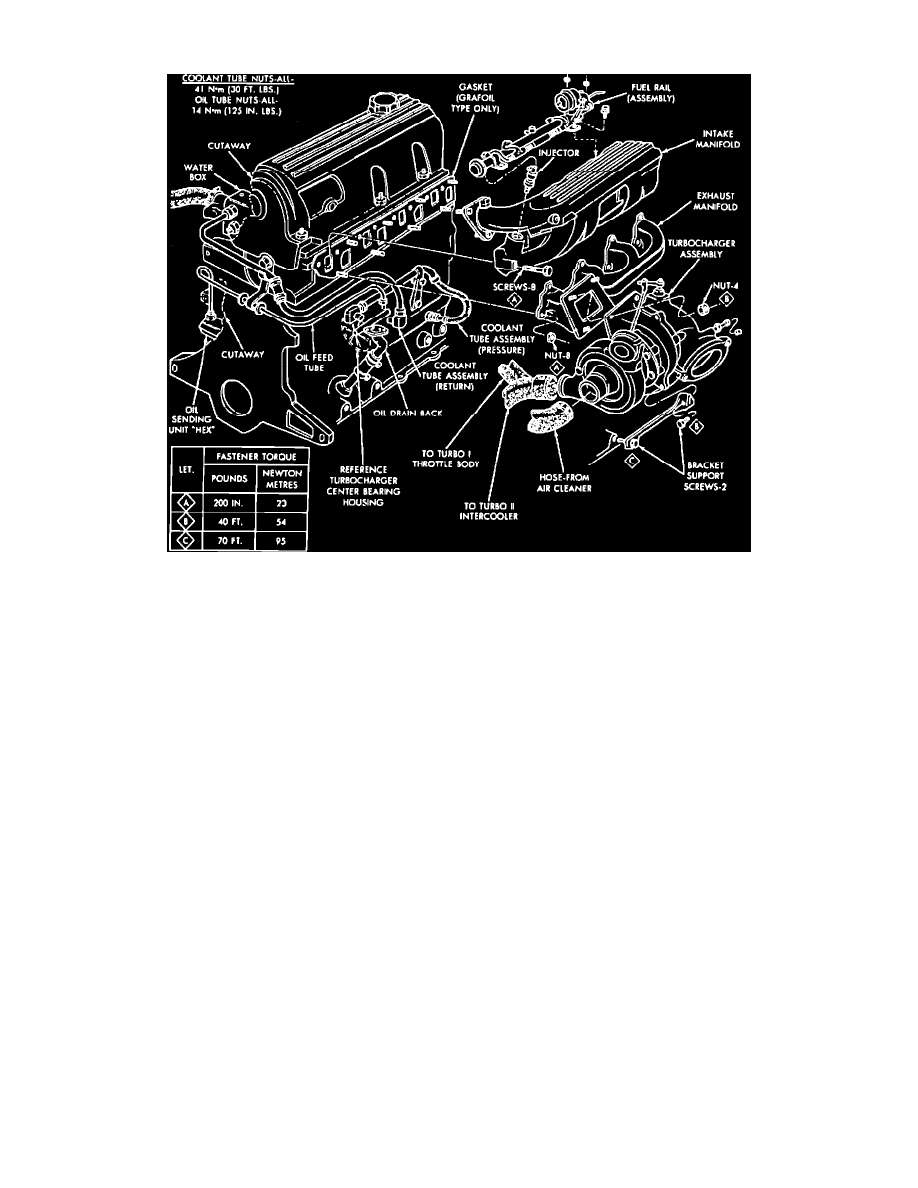Shadow Convertible L4-153 2.5L SOHC Turbo (1991)

Exhaust Manifold: Service and Repair
Fig. 3 Manifold Torque Specifications. 1989-90 Turbocharged Engine
1.
Disconnect battery ground cable.
2.
Remove air cleaner and throttle cable.
3.
Disconnect automatic idle speed (AIS) motor and throttle position sensor (TPS) connectors.
4.
Disconnect vacuum hoses from throttle body.
5.
Disconnect detonation sensor, fuel injector and charge temperature sensor connectors.
6.
Loosen tube nut on fuel pressure regulator. Wrap shop towels around hoses to catch any gasoline spillage.
7.
Open fuel tube clip and remove fuel tube.
8.
Disconnect vacuum hoses from fuel pressure regulator, then remove fuel pressure regulator attaching nuts and regulator.
9.
Remove PCV, brake booster and vacuum vapor harness from intake manifold.
10.
Disconnect knock sensor connector, then remove fuel rail to intake manifold attaching screws.
11.
Remove fuel rail and injector assembly by pulling rail so injectors come straight out of their ports.
12.
Remove front engine mount through bolt and rotate engine forward away from cowl.
13.
Remove coolant and oil lines from turbocharger, then remove wastegate rod-to-gate retaining clip.
14.
Remove turbo retaining nuts, then disconnect oxygen sensor electrical connector and vacuum lines.
15.
Raise and support vehicle, then remove the right front wheel and tire assembly.
16.
Remove turbo to block support bracket, then the driveshaft assembly.
17.
Separate oil drain back tube from turbo housing and remove fitting.
18.
Disconnect exhaust pipe from turbo, then remove remaining turbo to manifold retaining nut.
19.
Remove lower coolant line and inlet fitting, then remove turbocharger.
20.
Remove eight intake manifold screws and washers, then the intake manifold.
21.
Remove eight exhaust manifold retaining nuts, then the exhaust manifold.
22.
Reverse procedure to install, noting the following:
a. Use new manifold gaskets.
b. Use anti-seize compound on all threads.
c. Torque bolts and nuts to proper specifications.
